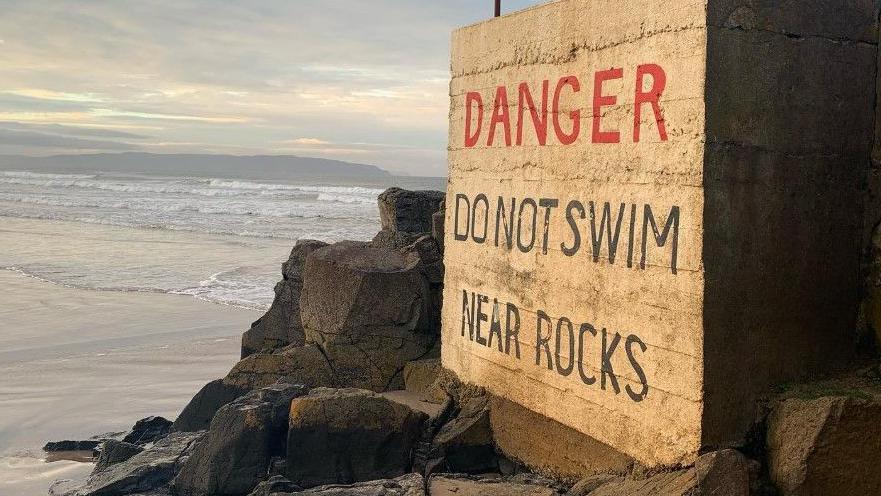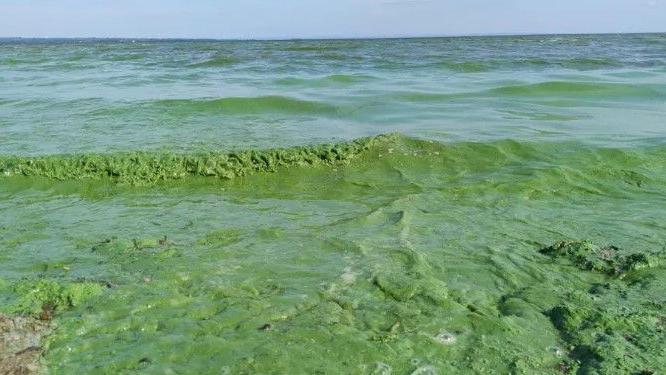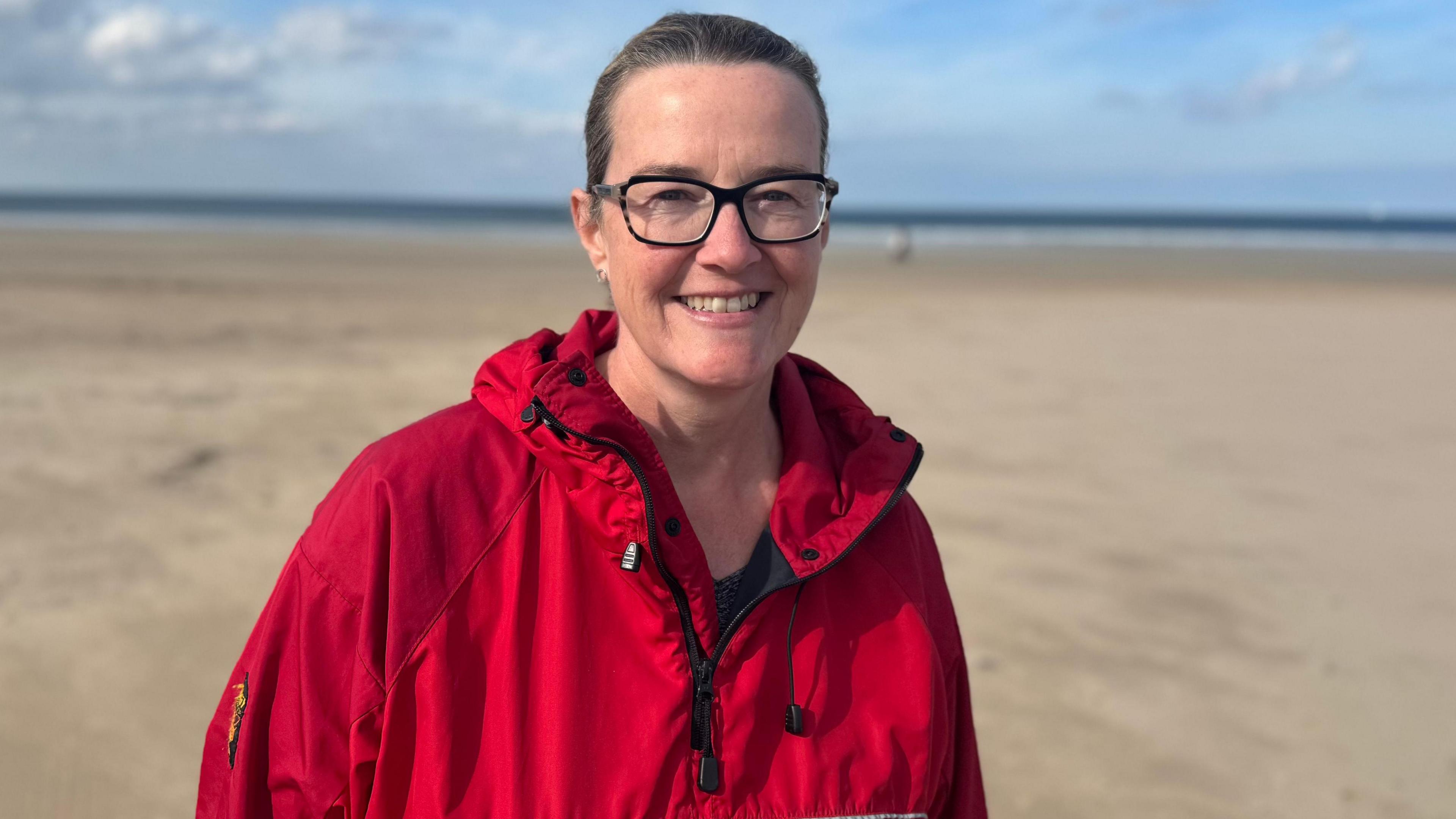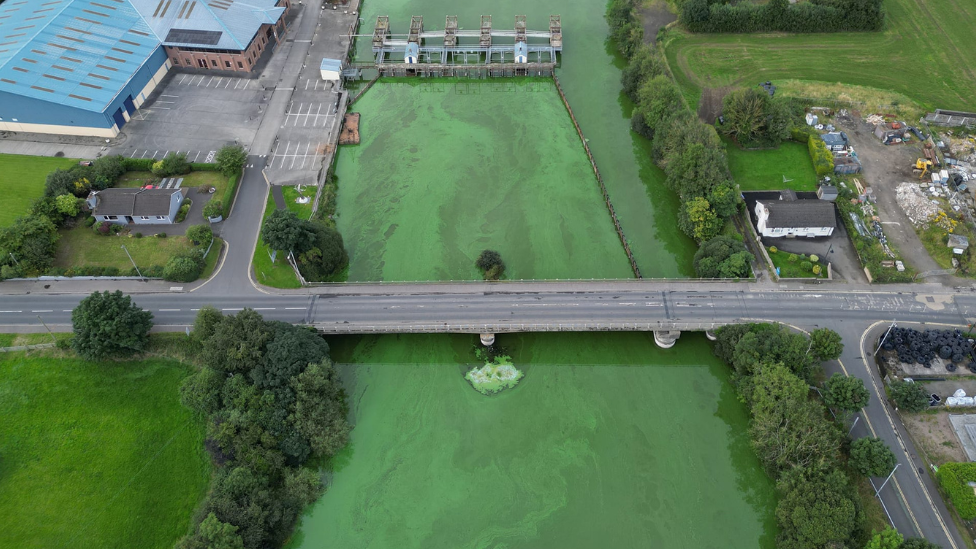Bathing alerts removed at two north coast beaches

Temporary notices were put in place due to a presence of blue-green algae
- Published
Temporary advice against bathing notices at Portstewart Strand and Downhill due to a presence of blue-green algae have been removed.
The previous advice was issued on 23 September after blue-green algae had been identified at significant levels during routine water quality monitoring by the Department of Agriculture, Environment and Rural Affairs (Daera).
The department said Castlerock and Portstewart remain at an amber alert with vigilance encouraged.
They also advised the public to "watch out for blue-green algae scums and when in doubt, stay out".
What is blue-green algae?
Blue-green algae, technically known as cyanobacteria, is a collection of microscopic organisms that are naturally present in lakes and streams.
Under certain conditions, blue-green algae can become abundant in warm, shallow, undisturbed, nutrient-rich surface waters that receive a lot of sunlight.
When this occurs, blue-green algae can form blooms that discolour the water, or produce floating mats or scums on the water's surface.
It can spread rapidly, with blooms beginning to double every seven to 14 days.

The large algae blooms have been an ongoing problem at Lough Neagh
While some blue-green algae can produce toxins, it is not possible to tell by sight alone. For pets, livestock and wildlife, the blooms can be extremely dangerous.
If people are exposed to high levels of blue-green algae, either through contact with water blooms, swallowing the water or inhaling airborne droplets, may cause health effects.
These can include diarrhoea, nausea or vomiting, skin, eye or throat irritation; and allergic reactions or breathing difficulties.
Read more here.
- Published27 September

- Published24 September

- Published5 August 2024
